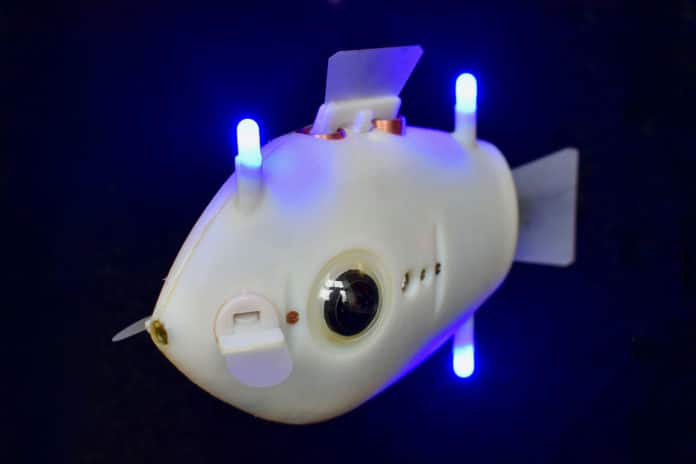The world of robotics, when exploring the oceans, adapt their shapes to resemble marine animals. That already happened a few years ago with the “robotic jellyfish,” and since then, much progress has been made in the sector.
The fact is that the issue does not begin and end with jellyfish; it is also working with other animals. Now, Harvard University researchers have developed fish-inspired robots that can synchronize their movements like a real school of fish, without any external control.
Each robotic fish, known as a Bluebot, is equipped with two cameras and three LEDs. The built-in fisheye cameras detect the LEDs on neighboring Bluebots and use a custom algorithm to determine their distance and direction. Based on the simple generation and detection of LED light, the researchers have shown that the Blueswarm could exhibit complex self-organized behaviors, including aggregation, dispersion, and circle formation.
They swim using fins instead of propellers, which improves their efficiency and maneuverability compared to standard underwater drones, and they manage to communicate with each other by radio transmitting their GPS positions to decide how to move and not go off the bank. The 3D-printed robots are about 4 inches long, and their design was inspired in part by fish native to the coral reefs of the Indo-Pacific.
“Robots are often deployed in areas that are inaccessible or dangerous to humans, areas where human intervention might not even be possible,” said Florian Berlinger, a Ph.D. Candidate at SEAS and Wyss and first author of the paper. “In these situations, it really benefits you to have a highly autonomous robot swarm that is self-sufficient. By using implicit rules and 3D visual perception, we were able to create a system that has a high degree of autonomy and flexibility underwater where things like GPS and WiFi are not accessible.”
Researchers also sent the Bluebots on a simple search mission. To do this, they positioned a red light in the tank and spread out Bluebots across the tank until one comes close enough to the light source to detect it. Once the robot detects the light, its LEDs begin to flash, which triggers the aggregation algorithm that attracted all the Bluebots so that they would gather in the swarm around the target.
“Our results with Blueswarm represent a significant milestone in the investigation of underwater self-organized collective behaviors,” said Radhika Nagpal, the Fred Kavli Professor of Computer Science at SEAS. “Insights from this research will help us develop future miniature underwater swarms that can perform environmental monitoring and search in visually-rich but fragile environments like coral reefs. This research also paves a way to better understand fish schools by synthetically recreating their behavior.”
The Bluebot robots can be used to conduct biological studies on fish swimming, as well as help learn more about collective intelligence in nature.
